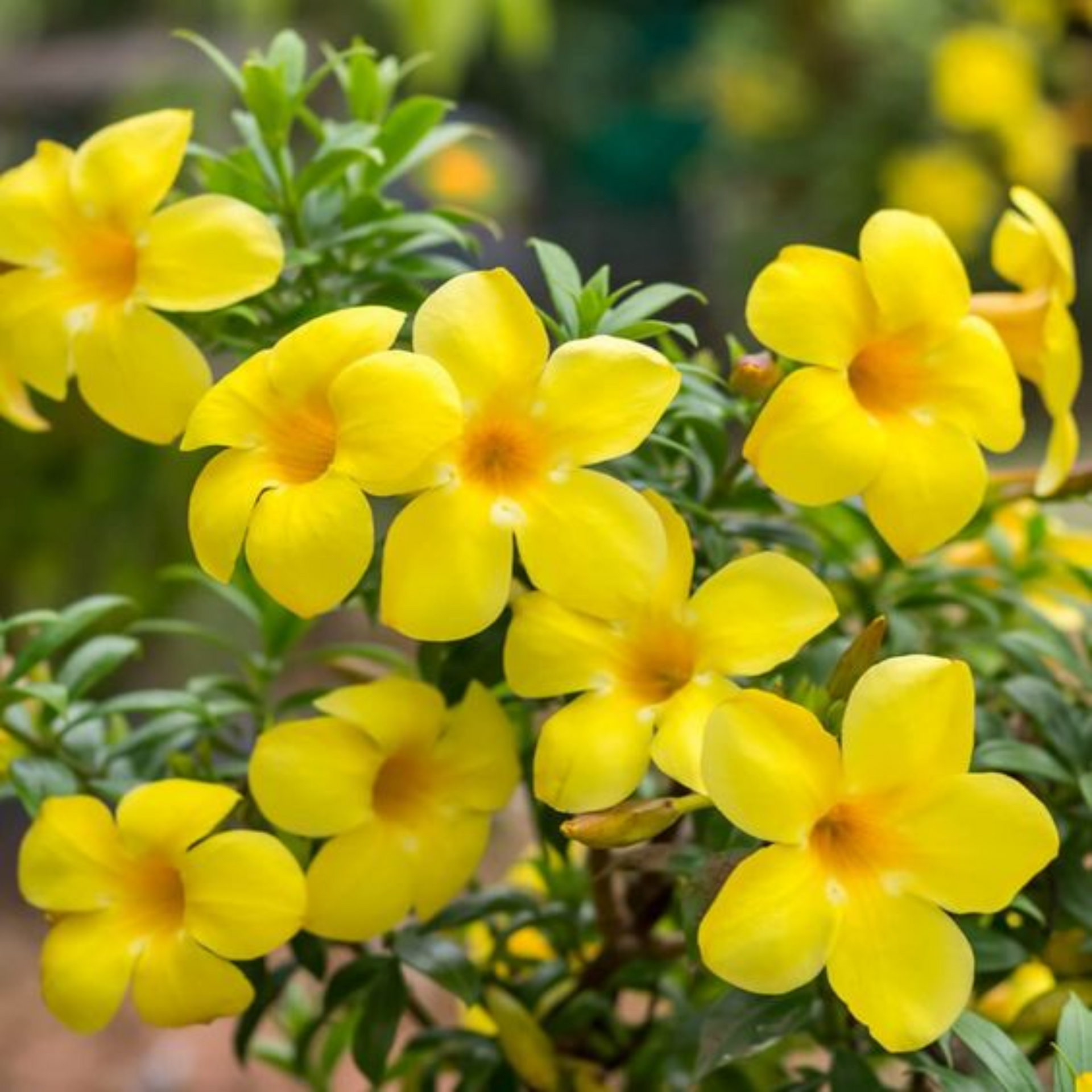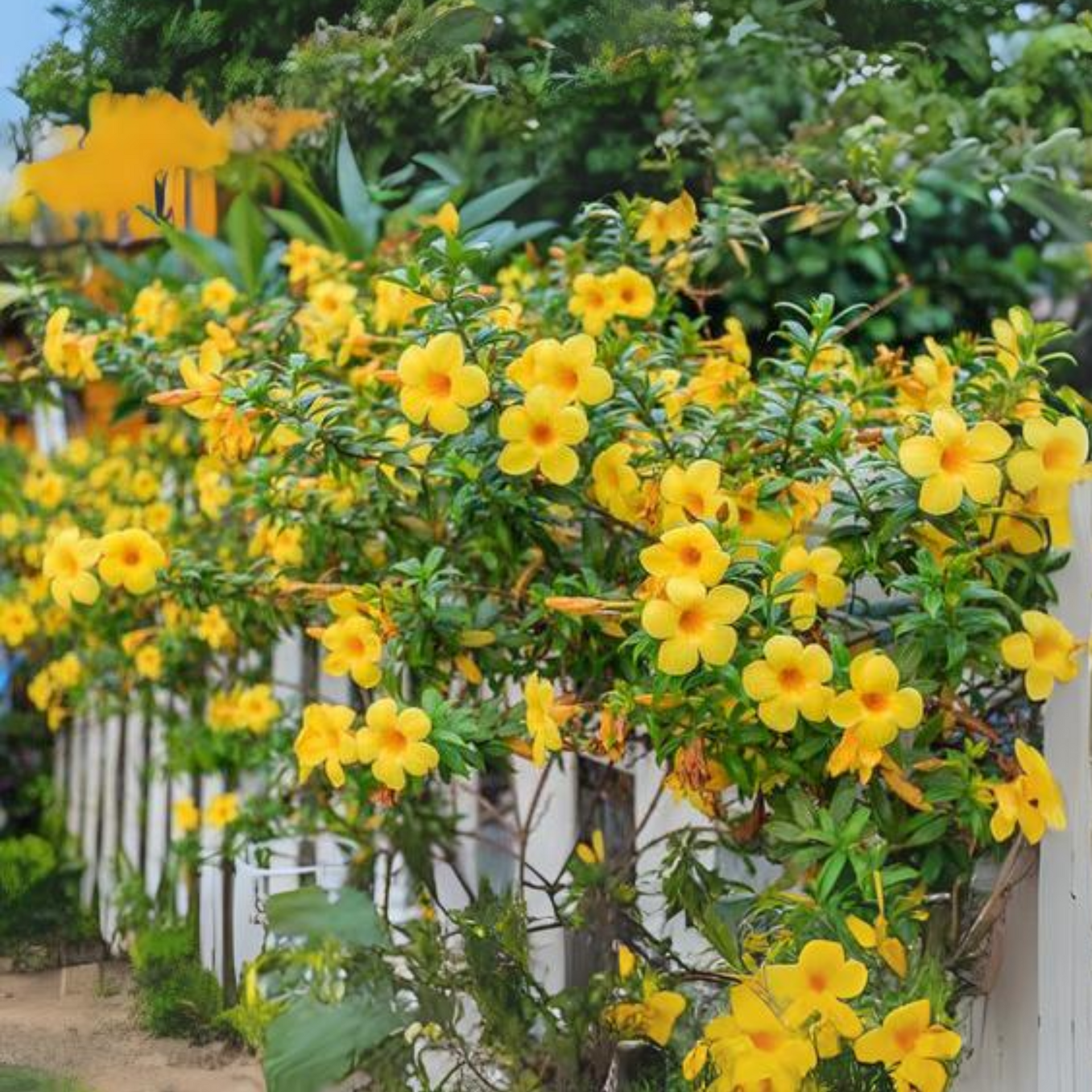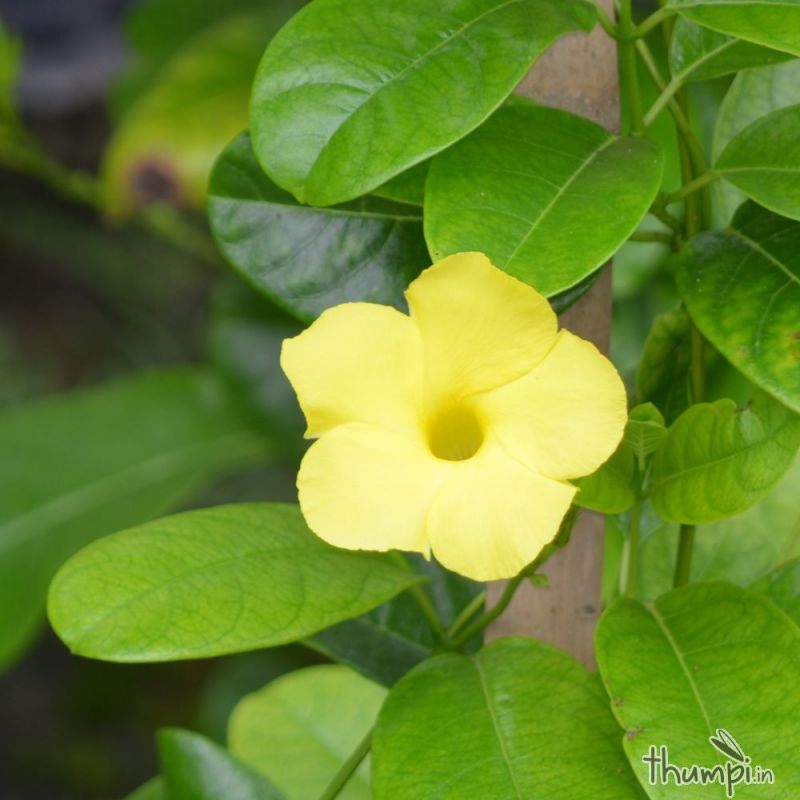


Green Paradise Offers Beautiful
Allamanda Creeper Plant
About Allamanda Plant
regions of South and Central America. One of the popular species within this genus is Allamanda cathartica, commonly known as the allamanda creeper or golden trumpet.
Here's some information about the allamanda creeper plant:
Appearance:
-
The allamanda creeper is a vigorous, climbing plant with woody stems and glossy, dark green leaves.
-
It can grow up to 20 feet (6 meters) in height and spreads extensively if not pruned regularly.
Flowers:
-
The plant is primarily cultivated for its stunning trumpet-shaped flowers.
-
The flowers are large, about 3 to 5 inches (8 to 13 centimeters) in diameter, and typically bright yellow in color, although there are cultivars with pale yellow or creamy white flowers as well.
-
The flowers usually have five petals and a distinctive trumpet-shaped throat.
Bloom time:
-
Allamanda creepers are known for their profuse flowering.
-
They produce flowers throughout the year in warm climates, with peak blooming occurring during the summer months.
-
In cooler regions, they may go dormant during winter.
Growing conditions:
-
Allamanda creepers thrive in warm and tropical climates.
-
They prefer direct sunlight but may tolerate some shade.
-
The plant requires well-drained soil and regular watering, especially during dry periods.
-
It is not frost-tolerant and may suffer damage or die if exposed to cold temperatures.
Pruning:
-
Due to its vigorous growth habit, the allamanda creeper benefits from regular pruning.
-
This helps to control its size, promote business, and encourage better flowering.
-
Pruning is usually done after the blooming period to remove dead or weak branches and shape the plant.
Toxicity:
-
It's important to note that all parts of the allamanda creeper, including leaves, stems, and sap, contain toxic compounds.
-
These can cause skin irritation, and ingestion can be harmful to humans and pets.
-
It's advisable to handle the plant with care and keep it away from children and animals.
Uses:
-
Allamanda creepers are commonly grown as ornamental plants in gardens and landscapes.
-
They are often trained to climb on trellises, walls, or fences, adding vertical interest to the landscape.
-
Their vibrant flowers and glossy foliage make them visually appealing and attract butterflies and hummingbirds.
Cultivars:
-
Besides the classic yellow-flowered Allamanda cathartica, there are several cultivars available with variations in flower color.
-
Some famous examples include 'Hendersonii' (deep golden yellow), 'Alba' (white flowers), and 'Cherries Jubilee' (red-orange flowers).
Remember, if you're planning to grow an allamanda creeper or any other plant, it's always a good idea to research specific care instructions and consult with Green Paradise Nursery experts to ensure optimal growth and maintenance in your particular area.
How To Grow Allamanda Plant
Allamanda creeper is a beautiful flowering plant that can be grown as a vine or a shrub.
Here are some general guidelines to help you grow an Allamanda creeper:
Climate and Location:
- Allamanda creeper thrives in warm tropical or subtropical climates.
- Choose a position that receives full sun for at least six hours a day.
- Ensure the planting area has well-draining soil.
Soil Preparation:
- Loosen the soil and remove any weeds or rubbish from it.
- Mix organic matter like compost or well-rotted manure into the soil to improve fertility and drainage.
Planting:
- Dig a hole that's slightly larger than the root ball of the factory.
- Place the allamanda creeper into the hole, icing that the top of the root ball is positioned with the girding soil.
- Backfill the hole with soil, and gently indurate it around the factory.
Watering:
- Water the newly planted allamanda thoroughly to settle the soil.
- subsequently, water the factory regularly to keep the soil constantly wettish, but not doused.
- During dry periods, increase the frequency of watering.
Fertilization:
- Feed the allamanda creeper with a balanced fertilizer every four to six weeks during the growing season.
- Follow the instructions on the toxin package for the applicable lozenge.
- Avoid over-fertilizing, as it can lead to excessive foliage growth with fewer flowers.
Pruning:
-
Prune the allamanda creeper to maintain its desired shape and size.
-
After each blooming cycle, trim back the spent flowers and any leggy or overgrown branches.
-
Pruning also helps to promote branching and more flower production.
Support and Training:
- If you are growing the allamanda creeper as a vine, provide a trellis, arbor, or other suitable support for it to climb.
- As the plant grows, gently tie the stems to the support structure to encourage upward growth.
Pests and Diseases:
- Allamanda creeper is generally resistant to pests and diseases.
- However, keep an eye out for common garden pests like aphids, mealybugs, and whiteflies.
- If you notice any infestations, treat them with appropriate insecticides or try organic pest control methods.
Remember, allamanda creeper contains toxic compounds, so it's essential to keep it away from children and pets. It's always a good idea to consult local gardening resources or experts for specific care instructions tailored to your region's climate and conditions.




